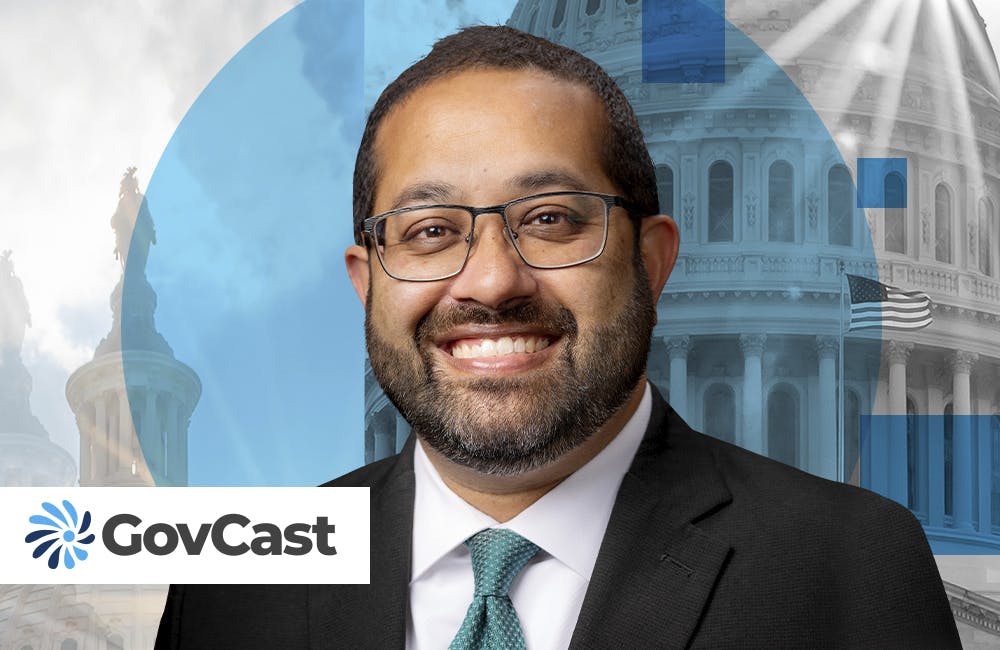Cloud’s Role in Mass Transition to Telework Amid Pandemic
Federal leaders reflect on the benefits of cloud for ongoing telework capabilities.

While the move to mass telework in response to COVID-19 might have come rather suddenly for most of the nation, federal agencies such as the Small Business Administration and the Department of Health and Human Services were able to quickly pivot due to prior efforts in moving to the cloud.
“On the surface, it looks like it was just automatic, but if we hadn’t done the hard work before that, it probably would have been a failure,” said SBA Deputy CIO Guy Cavallo during an FCW Cloud Summit virtual panel discussion Wednesday.
Since the agency backs some measures from the government’s coronavirus relief bill, including the Paycheck Protection Program (PPP) and COVID-19 Economic Injury Disaster Loans (EIDL), Cavallo’s team had to build new input portals “in a matter of days,” he said.
Because they were already in the cloud, the team was able to complete the project in less than eight days with all of the necessary security protocols in place.
The agency also held various training sessions for personnel to transition from landline to mobile services over the past 18 months and was ready to onboard new employees onto virtual desktops before they got personal identity verification cards using a controlled cloud-environment.
For HHS Office of Inspector General CIO Chris Chilbert, cloud computing also enabled his team to adapt and pivot remotely quickly. The agency recognized several years ago that increased mobility allows auditors in the field to better perform their duties, which led to an increased focus on cloud services.
“We need to have our auditors access data that [HHS operating divisions] manage on a daily basis,” he said. “What we’ve been trying to do is find new and improved ways of giving people access to that data in a secure way without necessarily having to do it the old fashioned way, which was to send over a bunch of CDs.”
The agency is working closely with the Centers for Medicare and Medicaid Services, which makes up about 80% of its oversight workload, Chilbert said, adding that CMS has “done a lot of work” to help move data to digital cloud platforms.
Through leveraging cloud computing collaboratively across the agency’s various divisions, HHS also aims to improve data analysis processes and layer automation capabilities like artificial intelligence, “securely providing data access for employees into those cloud environments,” he said.
With the cloud supporting the shift to telework and enhanced data capabilities, Chilbert and Cavallo observed some positive changes in how their teams have utilized existing digital services effectively to move away from in-person, paper-based processes.
“When people went home and wanted printers, we said no, you don’t need a printer anymore because you can digitally sign [documents] overnight,” said Cavallo. “COVID-19 helps us reinforce that message a lot more than we had planned, and maybe we don’t need as much paper in the federal government.”
“The workforce is actually getting better productivity from tools that they already have because they’ve been forced to use them in different ways,” Chilbert added.
The affordable and collaborative service capabilities that cloud offers, such as video conferencing and secure messaging, has also allowed the agencies to address the surging demand for federal employees. Instead of being restricted locally, they can hire top talent from across the country and still establish close communications.
“With today’s collaboration tools, I see more of my staff on my computer now than I did in the office,” Cavallo said. “I’m able to see them, I’m able to meet with them, I’m able to see their work. Why do they have to work in the same hallway as me?”
This is a carousel with manually rotating slides. Use Next and Previous buttons to navigate or jump to a slide with the slide dots
-

DOD Has a New Cyber Resiliency Assessment Program
Defense officials tout the continuous assessment feature and scalability of the new program amid increased cyber threats.
5m read -

Transitioning Systems for Modern Agency Missions
IT modernization is a constant process necessary for improving customer service, mission delivery and collaboration.
40m watch -

Cyber Resilience and Recovery Amid Evolving Cyber Threats
Data durability is a key aspect of NIST’s cybersecurity framework for public and private organizations.
21m listen -

How Tech Enables Environmental Justice at EPA
The agency wants to eliminate bias and establish new tech standards to reduce greenhouse gas emissions.
39m listen







